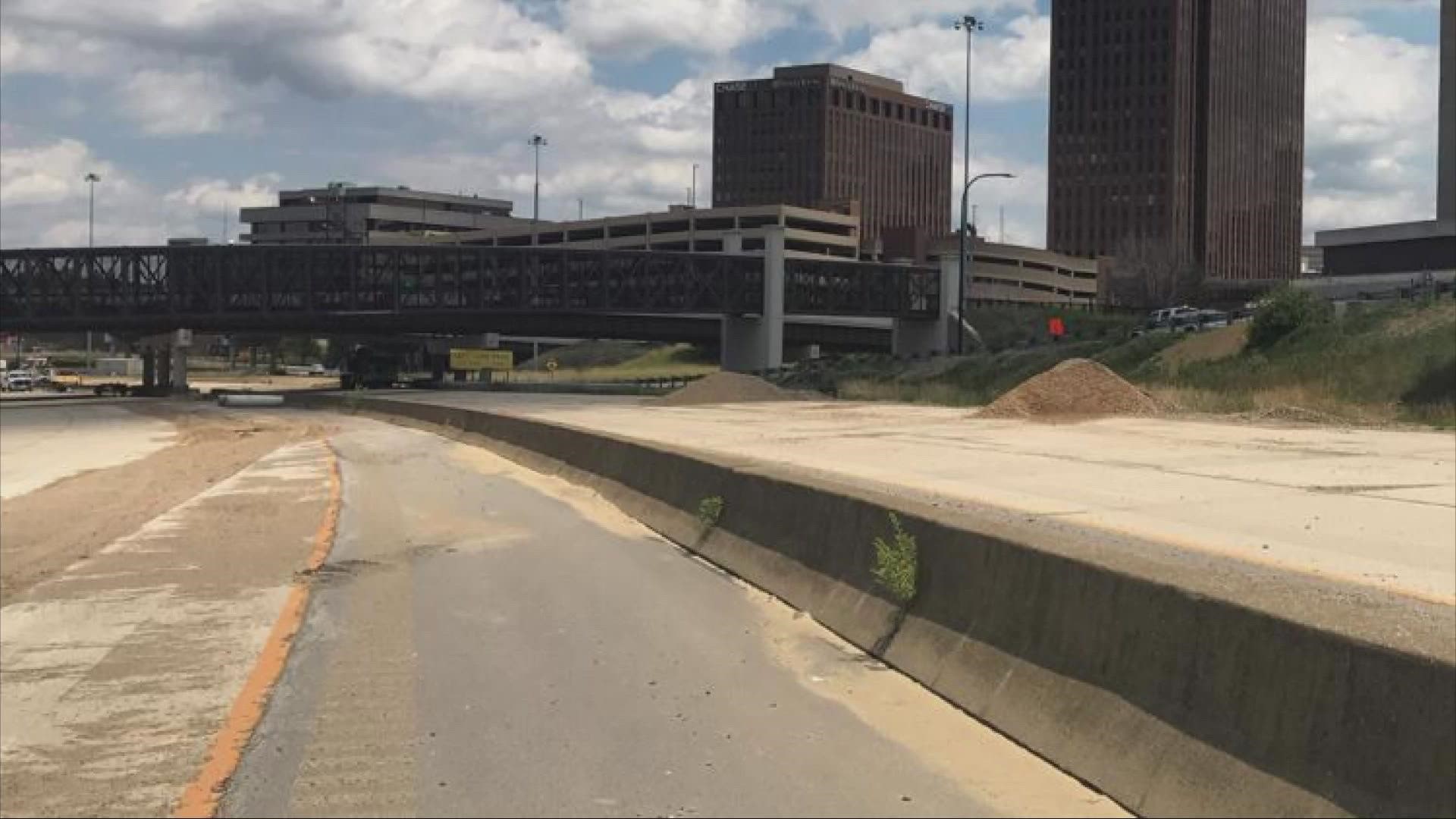AKRON, Ohio — “There’s a road that leads to nowhere in Akron.”
That’s the message at the opening of a new video shared by the city of Akron in reference to the abandoned Innerbelt roadway.
“In 1970, construction of the Innerbelt began, erasing a vibrant neighborhood and displacing residents and businesses,” Akron city officials noted. “In 2018, a portion of the Innerbelt (between Market and Exchange Streets) was permanently closed. Now the time has come to determine what’s next.”
This is where you come in…
The city has launched a survey regarding the future of the Innerbelt that asks for feedback on what you think Akron needs. You can take the survey HERE.
“The project was ultimately never completed and was abandoned, but now we are looking toward the future and we need your help,” city officials posted.
The survey is open through Jan. 31. Some of the questions included are:
- Are there amenities, resources or spaces that you think Akron needs?
- Do you have a favorite place that you love to go in Akron?
- Did you know a portion of the Innerbelt (Route 59) is permanently closed? (Between Market and Exchange streets)
- Were you or your family directly impacted by the Innerbelt’s construction?
- Is there anything that you would NOT want to see on that site?
“The City has hired spatial justice consultant Liz Ogbu to steward a public conversation around creating a new vision for a vibrant place that reconnects communities and honors both what once was here and our future aspirations for what we can be,” according to the survey’s page. “We want to hear from the Akron community, whether your family once called the land on which the Innerbelt sits home, you live or work near the Innerbelt, or you’re an Akron resident interested in what’s next.”
All completed surveys will be entered into a drawing for a $25 gift card.
“The Akron Innerbelt was a project that began in the 1960s to connect a nearby freeway to downtown,” the city’s post continues. “It was one of several urban renewal projects that ultimately targeted and displaced largely Black communities. The neighborhoods that were demolished for the Innerbelt were part of a once thriving cultural hub earlier in the 20th century driven by the booming rubber industry and its prime location for touring jazz artists like Ella Fitzgerald."
Editor's note: Video in the player above was originally published in an unrelated traffic story on Jan. 11, 2023.

